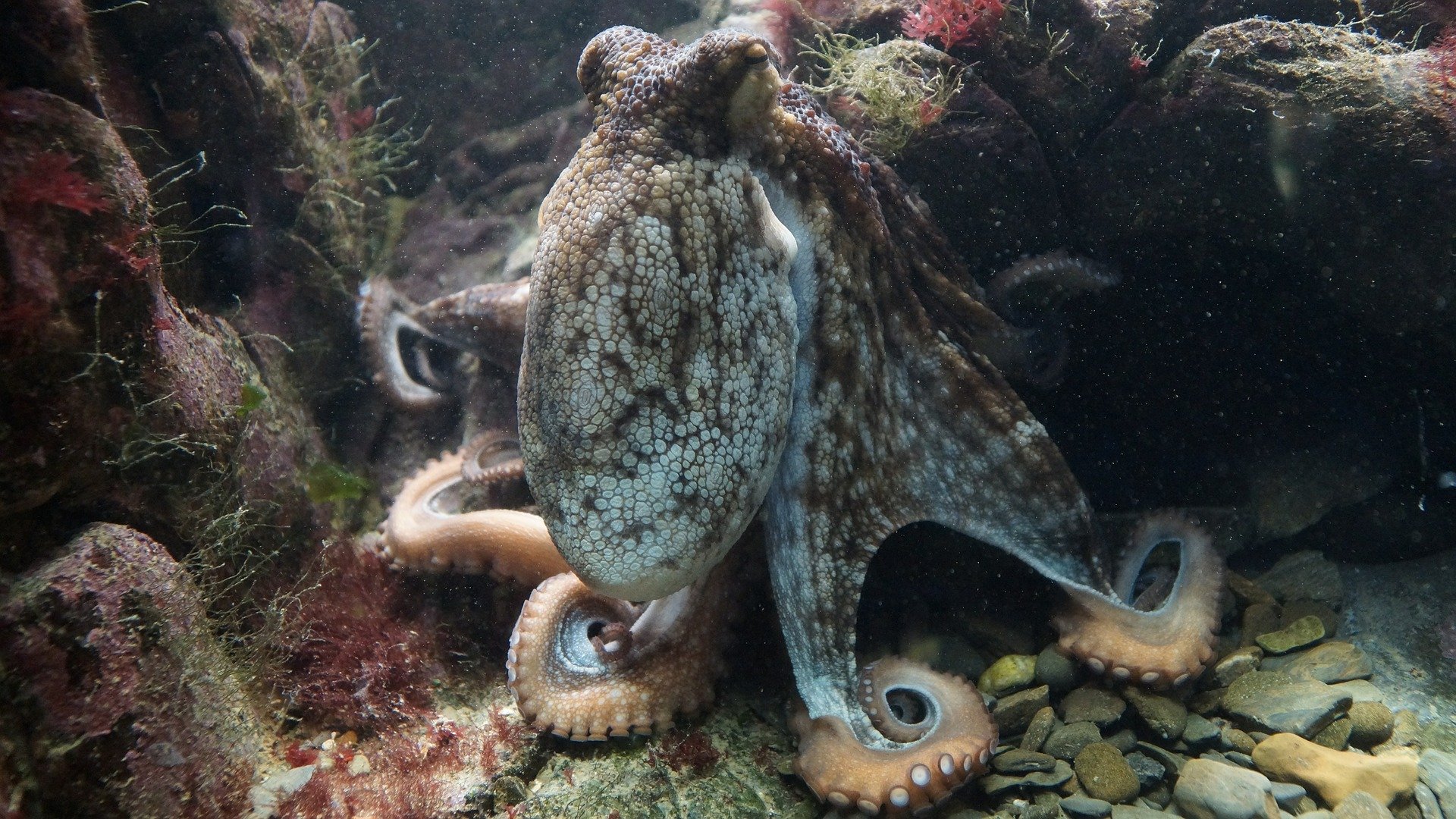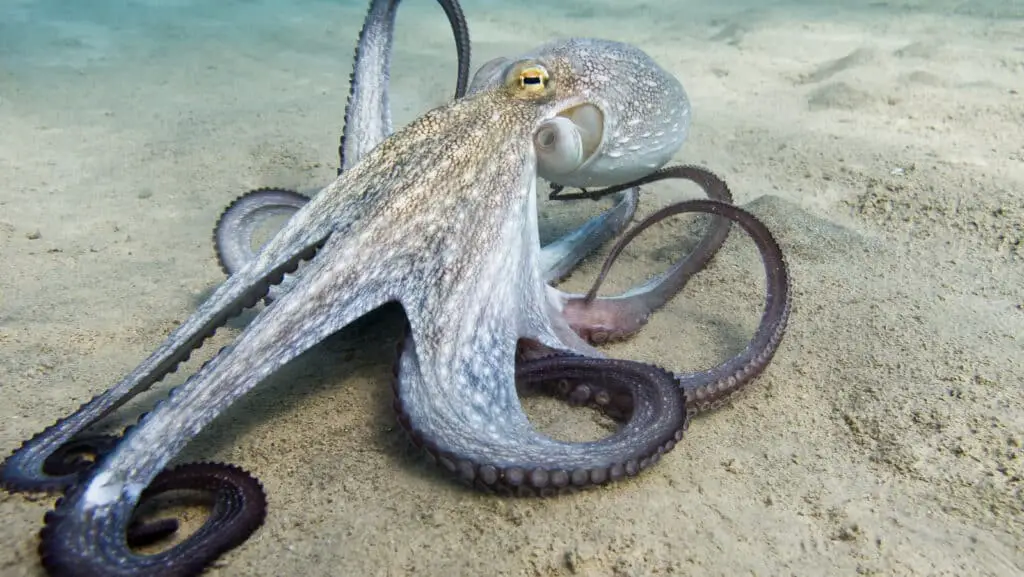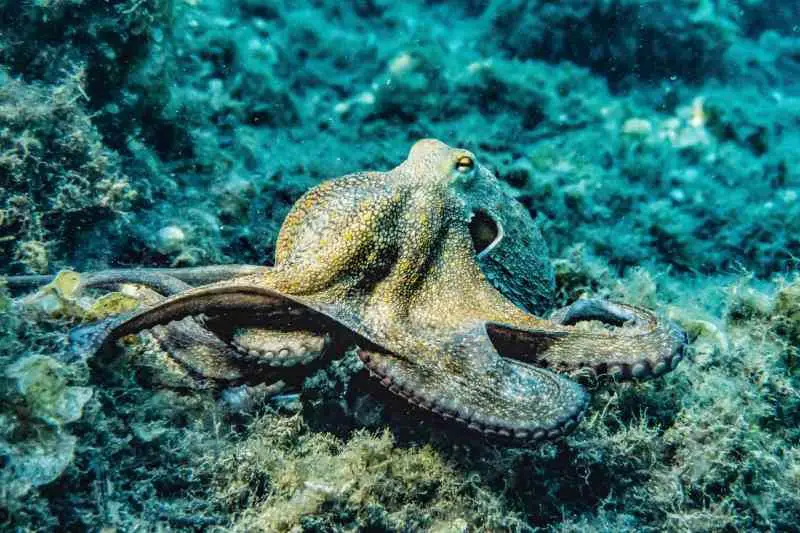Can Octopus Regenerate

Introduction
Can Octopus Regenerate: The octopus, a fascinating and enigmatic creature of the deep, has long captivated the curiosity of scientists and nature enthusiasts alike. While its intelligence, shape-shifting abilities, and mastery of camouflage have garnered much attention, one of the most intriguing aspects of the octopus is its remarkable regenerative abilities.
Octopuses live belong to a group of marine animals known as cephalopods, which also includes squids and cuttlefish. Unlike most vertebrates, which have limited regenerative capabilities, octopuses possess an astonishing capacity for tissue and limb regeneration. This unique ability allows them to recover from injuries that would be fatal for many other animals, making them true marvels of the underwater world.
Octopus regeneration extends beyond mere wound healing. They can regrow entire arms, complete with suckers, if they are severed or damaged. This regenerative prowess is not only essential for their survival in the perilous ocean environment, where encounters with predators are frequent, but it also raises intriguing questions about the underlying mechanisms driving this remarkable phenomenon.
We will uncover the science behind octopus regeneration, the potential applications for human medicine and technology, and the mysteries that still shroud this captivating aspect of cephalopod biology. Join us on a journey into the depths of the ocean to discover the astonishing world of octopus regeneration.

Can octopus regrow?
Like a starfish, an octopus can regrow lost arms. Unlike a starfish, a severed octopus arm does not regrow another octopus. But the biological secrets inside their arm regeneration feat do hold the promise of learning more about how we might better regenerate our own diseased or lost tissue.
Octopuses possess a remarkable ability to regrow their limbs, a phenomenon that has intrigued scientists and marine enthusiasts for years. Unlike most animals, whose regenerative capabilities are limited, octopuses can regrow not just simple structures like tails or fins, but entire complex appendages, including their eight arms.
This regenerative prowess is not only a crucial survival mechanism in their often perilous oceanic habitats, where encounters with predators can lead to lost limbs, but it also raises fundamental questions about the mechanisms underlying this extraordinary feat. The process of octopus regeneration involves the activation of specialized cells called progenitor cells, which have the unique capacity to differentiate into various cell types necessary for rebuilding the lost limb.
Moreover, recent research has shown that octopuses can even improve upon the regenerated limb, with some reports suggesting that the newly grown arms may be more robust or agile than the original ones. This astonishing ability to regrow and potentially enhance their limbs highlights the octopus’s status as a true marvel of the natural world and continues to be a subject of ongoing scientific investigation and fascination.
Do octopus feel pain when they lose arm?
Octopuses likely have nociceptors, as demonstrated from their withdrawal from noxious stimuli (even in severed arms) and suggested by the fact that there is good evidence that even “lower” mollusks possess them.
Octopuses have a complex nervous system, and their arms contain a significant portion of their neurons, suggesting a high level of sensory perception. However, the perception of pain in octopuses may be different from how humans experience it.
Octopuses have been observed to exhibit behaviors that indicate discomfort or distress when their arms are injured or severed. They may groom the injured area, protect it, or even abandon the severed arm if it is still attached to a struggling prey item. These actions suggest that they are aware of damage and respond to it.
The experience of pain in octopuses may not be analogous to the human experience. Pain is a subjective emotional response, and octopuses may lack the same emotional consciousness as mammals. Their responses to injury may be more reflexive or instinctual.
While some scientists argue that octopuses can experience a form of pain, the exact nature of this experience remains a subject of ongoing research and debate. Understanding the capacity for pain perception in octopuses is essential for ethical considerations in their care and treatment in captivity and in studies involving these intelligent marine animals.
Can octopus regenerate legs?
If an octopus’ arm is cut off without the poor guy being euthanized, it’s no sweat for the cephalopod. While cut-off limbs do not regrow a new octopus, à la starfish, the octopus can regenerate tentacles with a far superior quality than, say, a lizard’s replacement tail, Harmon writes.
Yes, octopuses possess a remarkable ability to regenerate lost legs. This astounding feat is a testament to their extraordinary biological adaptability. When an octopus loses a leg due to injury or predation, it initiates a complex process of tissue repair and regrowth. Specialized cells called progenitor cells play a crucial role in this regeneration process. These cells are capable of differentiating into various cell types, allowing for the reconstruction of complex structures like arms and legs.
The duration of leg regeneration varies depending on factors such as the octopus species, its age, and the extent of the injury. On average, it takes an octopus several weeks to several months to fully regrow a lost leg. Younger octopuses generally regenerate limbs at a quicker pace compared to older ones. Some smaller species might regenerate a leg in as little as three weeks, while larger species may take several months to complete the process.
This extraordinary ability to regenerate legs not only showcases the octopus’s biological prowess but also holds significant implications for scientific research. By studying these creatures, scientists hope to glean insights into the mechanisms of tissue regeneration, potentially contributing to advancements in regenerative medicine and tissue engineering. The octopus stands as a testament to the marvels of nature’s adaptability and resilience.
How fast do octopus regenerate?
From being able to regenerate an entirely new arm in just 2-4 months to having mini-brains in each arm to being able to smell, taste, and sense light, octopus arms are just one more topic we can all geek out about!
The speed at which an octopus regenerates largely depends on a variety of factors including the species, age, and the extent of the injury. On average, octopuses are known to be relatively efficient in this process. They can start regenerating a lost limb in a matter of days after the injury occurs.
The regenerative ability of octopuses is a testament to their remarkable biological adaptability. This capacity not only allows them to recover from injuries sustained in the wild but also captivates the interest of scientists and researchers seeking to understand the underlying mechanisms.
By studying these cephalopods, researchers hope to unlock valuable insights into tissue regeneration, potentially paving the way for breakthroughs in regenerative medicine and biotechnology. The octopus, with its astounding regenerative prowess, continues to be a source of fascination and inspiration for the scientific community.
Can all octopuses regenerate?
Besides their nervous system, octopuses can also regenerate their tentacles (3) and parts of the eye (4). This exceptional regenerative ability is not unique to octopuses – other members of Cephalopod species, like cuttlefish, can also regenerate arms (1).
While many species of octopuses possess the extraordinary ability to regenerate lost limbs, not all octopuses share this capability. The extent of their regenerative abilities can vary among different species. Generally, octopuses in the wild are known for their impressive regenerative powers, which allow them to replace lost arms or legs due to injury or predation.
However, it’s important to note that the ability to regenerate is not uniform across all species. Some octopus species exhibit more robust regenerative capacities, while others may have limited or no ability to regrow lost limbs. The degree of regeneration also depends on various factors such as the age and health of the octopus, as well as the specific circumstances of the injury.
Overall, while many octopuses have the remarkable capacity to regenerate, it’s not a universal trait among all species. This diversity in regenerative abilities adds to the complexity and richness of the cephalopod family, showcasing the incredible diversity of life forms that exist in the world’s oceans.
How long does it take for an octopus to regenerate an arm?
The regenerative abilities of an octopus are a marvel of the natural world. When an octopus loses an arm due to injury or predation, it has the astonishing capacity to regrow it. The duration of this process can vary depending on factors like the species of octopus, its age, and the extent of the injury.
On average, it takes an octopus several weeks to several months to fully regenerate a lost arm. Younger octopuses tend to exhibit faster rates of regeneration compared to their older counterparts. In some smaller species, the entire process can be completed in as little as three weeks, while larger species may take several months to regrow a lost arm.
This remarkable ability to regenerate has captivated the interest of scientists and researchers, offering valuable insights into the field of tissue regeneration and potential applications in medical research. By studying these enigmatic creatures, we gain a deeper understanding of the mechanisms behind tissue regrowth, which could hold significant implications for future advancements in regenerative medicine and biotechnology.
What triggers the regeneration process in octopuses?
The regeneration process in octopuses is triggered primarily by specialized cells known as progenitor cells. These cells are found in high concentrations throughout an octopus’s body, particularly in the areas surrounding their nervous system. When an octopus loses a limb due to injury or predation, a cascade of biological signals is initiated. This prompts nearby progenitor cells to become activated and start dividing.
These dividing progenitor cells play a pivotal role in the regeneration process. They are capable of differentiating into various cell types, which allows for the reconstruction of complex structures like arms and legs. The newly formed cells work together to create a framework that gradually develops into a functional limb.
Additionally, hormonal and biochemical signals, as well as environmental cues, can influence the regeneration process. For example, factors like temperature, nutrition, and the presence of certain molecules in the surrounding environment can impact the speed and success of the regeneration.
The interplay of these cellular and environmental factors orchestrates the extraordinary feat of limb regeneration in octopuses, showcasing the remarkable adaptability and resilience of these fascinating creatures. This phenomenon continues to intrigue and inspire scientists, offering insights into the broader field of tissue regeneration and potential applications in medical research.
How does regeneration benefit octopuses in the wild?
Regeneration bestows a significant survival advantage upon octopuses in the wild. In their natural environment, octopuses face a myriad of potential threats, including predators, territorial disputes, and hazards in their surroundings. The ability to regenerate lost limbs provides them with a powerful defense mechanism and a means of escape from dangerous situations.
Octopuses are exceptionally skilled hunters, relying heavily on their dexterous arms to catch prey. If one of these vital limbs becomes injured or severed during an encounter, the octopus can continue to forage and capture food with its remaining arms. This ensures their ability to sustain themselves while the regenerative process takes place.
Regeneration aids in the reproductive success of octopuses. In some species, males have specialized modified arms, or hectocotyli, used for mating. If a male were to lose this critical appendage, regeneration would enable him to participate in future reproductive opportunities.
Overall, the capacity for regeneration serves as a crucial survival strategy for octopuses in the wild. It not only allows them to recover from injuries sustained in their dynamic marine environments but also exemplifies the remarkable adaptability and resilience of these cephalopods. This natural wonder continues to captivate scientists and inspires ongoing research into the intricate mechanisms behind tissue regeneration.

Conclusion
In the realm of marine biology, the octopus stands out as a true wonder, not only for its remarkable intelligence and adaptability but also for its extraordinary regenerative abilities. Has revealed a world of resilience and innovation that continues to captivate scientists and nature enthusiasts alike.
Octopuses’ capacity to regrow limbs and tissues, sometimes even with improvements in functionality, serves as a testament to the extraordinary power of nature. It is a survival strategy honed over millions of years of evolution, allowing them to navigate the perilous waters of the ocean with a fighting chance against formidable adversaries.
Beyond its intrinsic wonder, the study of octopus regeneration holds tremendous potential for various fields. Researchers are looking to unravel the underlying genetic and molecular mechanisms driving this process, with implications for regenerative medicine and tissue engineering in humans. The octopus may hold the key to unlocking new treatments for injuries and diseases that afflict our species.
Our journey into the world of octopus regeneration, we are left with a profound appreciation for the mysteries of the natural world and the boundless possibilities that lie ahead in scientific discovery. The octopus reminds us that even in the depths of the ocean, where darkness prevails, there exists a resilient force of life that continues to inspire and amaze.



